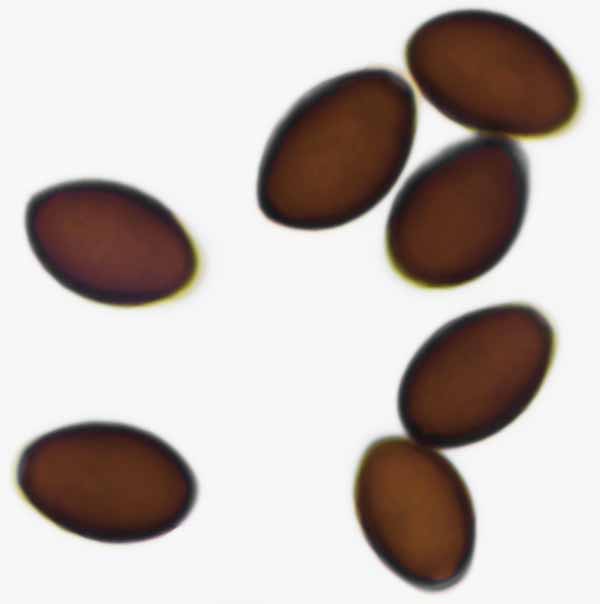Coprinopsis martinii (J. Favre ex P.D. Orton) Redhead, Vilgalys & Moncalvo
Phylum: Basidiomycota - Class: Agaricomycetes - Order: Agaricales - Family: Psathyrellaceae
Distribution - Taxonomic History - Etymology - Identification - Toxicity - Reference Sources
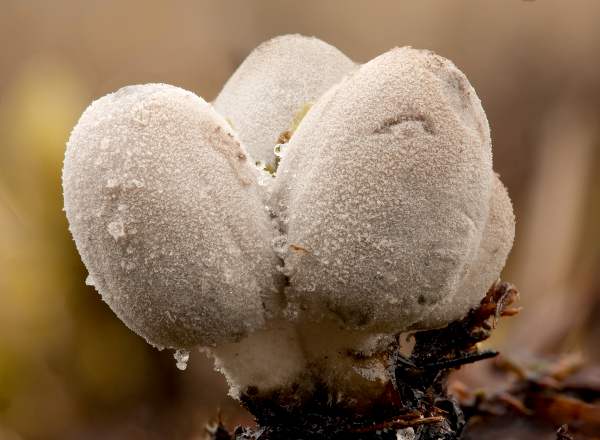
It is always a delight to come across a rare and beautiful inkcap mushroom, and Coprinopsis martinii is one of the rarest and most beautiful. Unlike most other seldom-seen inkcaps, Coprinopsis martinii is gregarious and often produces photogenic groups.
The wonderful patterning of white or silvery grey veil fragments on an underlying grey cap creates a frosted appearance which, initially at least, conceals the pleated margin of the cap.
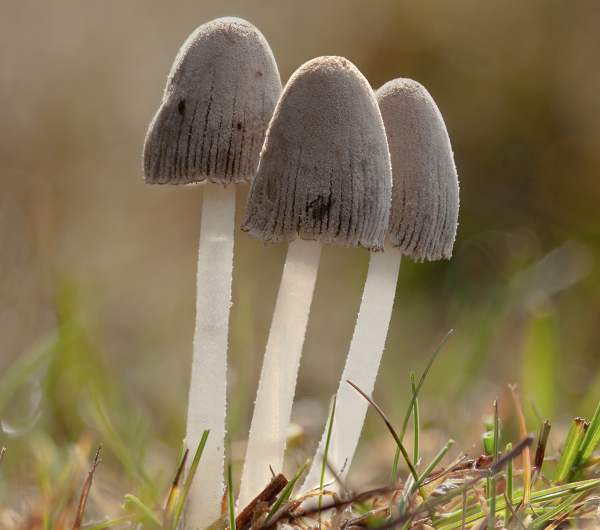
Like all inkcaps, the fruitbodies of this mushroom are short lived, and so a patient observer could have an educational day watching a cap expand from an elongated egg to conical and then bell-like as the universal veil remnants fall away to reveal the underlying grey pileipellis.
As with many other inkcaps, the gills of Coprinopsis martinii deliquesce, a process which aids spore dispersal particularly in wet weather.
Distribution
An extremely rare find in Britain and Ireland, Coprinopsis martinii is probably far more widespread that its meagre list of official records suggest. This inkcap favours marsh and fen habitats which few fungi enthusiasts tend to visit - for safety and comfort reasons as well as because of the general paucity of large basidiomycete fungi in such very wet places.
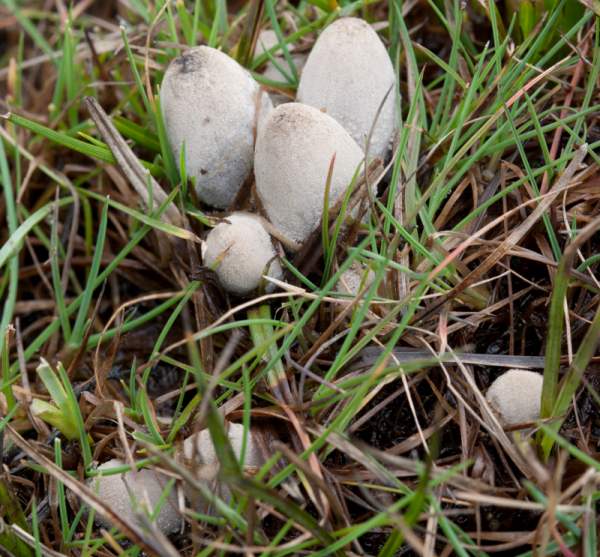
Taxonomic history
This pretty little inkcap was described scientifically by British mycologist Peter Darbishire Orton in the publication Coprinus martinii J. Favre ex P.D. Orton, Trans. Br. mycol. Soc. 43(2): 201 (1960).
Note: 'ex.' appears in a botanical/mycological author citation it indicates that an initial description by the first named author(s) did not comply with the rules for valid publication, and that the same scientific name was later validly published by the second named author(s). Hence Coprinus martinii (J. Favre ex P.D. Orton) 1960 implies that an earlier publication by Swiss naturalist Jules Favre (1882 - 1959) was validly published in 1960 by British mycologist Peter Darbishire Orton (1916 - 2005), who based his own description of the species on Favre's earlier description.
It is the accepted rule that the name of author of the earlier published species name precedes the later, valid one, with 'ex' separating the two names.
This mushroom remained in the Coprinus genus until 2001 when, as a result of molecular (DNA) analysis by Redhead, Vilgalys & Moncalvo, the large Coprinus genus was shown to contain groups of fungi with only distant relationships to one another, and the earlier Coprinus group was dismantled with Coprinopsis martinii being moved into the genus Coprinopsis within the family Psathyrellaceae. Coprinus comatus, the Shaggy Inkcap plus three other rare fungi are all that now remains of the formerly large Coprinus genus; however, many field guides and websites are yet to be updated in this respect.
Synonyms of Coprinopsis martinii include Coprinus martinii J. Favre ex. P.D. Orton.
Etymology
The generic name Coprinopsis indicates that mushrooms in this genus are similar in appearance to those in the genus Coprinus, which literally means 'living on dung' - that's true of quite a few of the inkcaps but not particularly apt for this and several other species.
The specific epithet martinii honours American mycologist George Willard Martin (1886 - 1971).
Common names change with time and location. In America the terms Inky Cap or Inky-cap are most commonly used, while in many older field guides published in Britain you are likely to see Ink Cap or Ink-cap rather than Inkcap.
Toxicity
Several of the more common Coprinopsis mushrooms - the Magpie Inkcap Coprinopsis picacea for example - are known to be poisonous, and as the edibility of Coprinopsis martinii is unclear we recommend that this inkcap should not be gathered for eating. In any case these are very rare finds in most areas and are best left for others to see and enjoy.
Identification guide
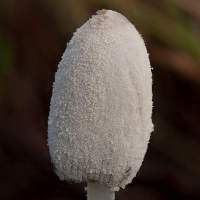 |
CapInitially ovoid to cylindrical, later expanding to convex and them campanulate; 0.5-2.2cm in diameter when fully expanded, becoming radially grooved; grey, covered in powdery grey veil fragments. |
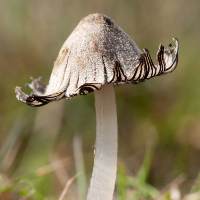 |
GillsCrowded, white at first but turning black and deliquescing. Stem3-6cm long and 1.5-2mm in diameter, the pale grey stem is cylindrical, widening towards the base. |
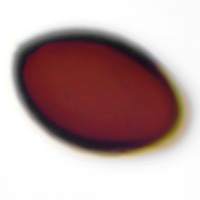 |
SporesEllipsoidal or amygdaloidal (almond-shaped), smooth, 13-17 x 7.5-8.5µm; with a central germ pore; inamyloid.
Spore printBlack. |
Odour/taste |
Not distinctive. |
Habitat & Ecological role |
Saprobic, singly or more often in small groups in damp. litter-rich grassland or decaying vegetable matter, particularly rushes and sedges (botanical families Juncaceae and Cyperaceae). |
Season |
May to October in Britain and Ireland. |
Similar species |
There are several similar white inkcaps and separating them generally requires careful study of both macroscopic and microscopic characters as well as careful attention to the growing medium/substrate. |
Reference Sources
Orton, P.D. & Watling, R. (1979). British Fungus Flora: Agarics and Boleti. Vol 2. Coprinaceae: Coprinus. Royal Botanic Garden: Edinburgh.
Redhead SA, Vilgalys R, Moncalvo J-M, Johnson J, Hopple JS Jr.; Vilgalys, Rytas; Moncalvo, Jean-Marc; Johnson, Jacqui; Hopple, Jr. John S (2001). 'Coprinus Pers. and the disposition of Coprinus species sensu lato.'. Taxon (International Association for Plant Taxonomy (IAPT)) 50 (1): 203–41.
Breitenbach, J., Kränzlin, F., Fungi of Switzerland Agarics, 2nd part: Entolomataceae, Pluteaceae, Amanitaceae, Agaricaceae, Coprinaceae, Bolbitiaceae.
Coprinus martinii P.D. Orton, Trans. Br. mycol. Soc. 43(2): 201 (1960)
English Names for fungi; British Mycological Society, 2013.
Dictionary of the Fungi; Paul M. Kirk, Paul F. Cannon, David W. Minter and J. A. Stalpers; CABI, 2008
Taxonomic history and synonym information on these pages is drawn from many sources but in particular from the British Mycological Society's GB Checklist of Fungi.
Acknowledgements
This page includes pictures kindly contributed by David Kelly.
Fascinated by Fungi. Back by popular demand, Pat O'Reilly's best-selling 450-page hardback book is available now. The latest second edition was republished with a sparkling new cover design in September 2022 by Coch-y-Bonddu Books. Full details and copies are available from the publisher's online bookshop...

